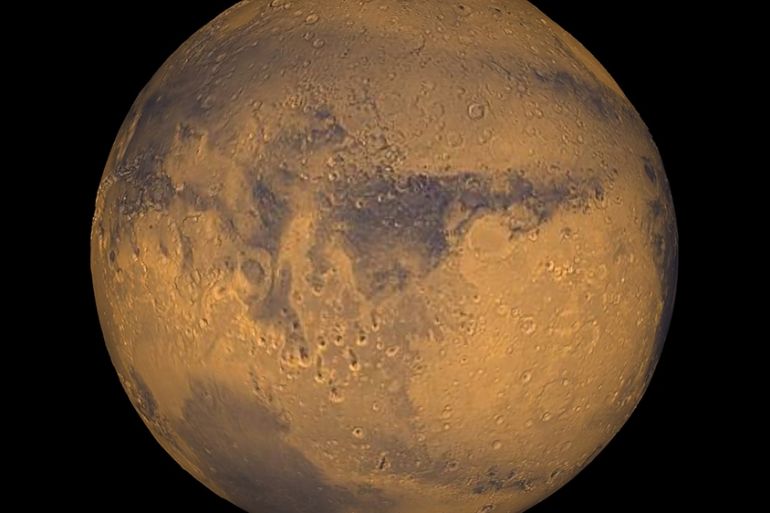Europe’s space agency has Mars and the sun in its sights for 2020
Flush with cash, Europe’s space agency hopes to put the troubles of 2019 in the past.

Emerging from a year that saw the European Space Agency (ESA) suffer serious and sometimes embarrassing setbacks, ESA Director General Jan Woerner on Wednesday, in his annual news conference in Paris, revealed an ambitious and demanding year ahead.
“[It]is important at the beginning of a year to think about that it’s not just another year. It’s a very special year,” Woerner said. “Everybody is talking about climate change as the predominant challenge. Yes, it is predominant, but we have also other challenges.”
Keep reading
list of 3 itemsNATO declares space an ‘operational domain’
In pieces: India’s Vikram Lander found months after it was lost
In the coming 12 months, ESA plans to send a lander-rover mission to Mars, an orbiter to the sun, and a reprogrammable satellite into Low Earth Orbit. This schedule comes on the heels of a year in which ESA experienced problems with its ExoMars mission and saw its Galileo navigation system – similar in function to GPS – suffer a seven-day outage.
Woerner also said that in addition to continuing to study the environment on Earth, ESA aims to take a leading role in tackling space junk – mostly dead satellites and rocket parts that litter orbits around Earth.
One challenge the space agency does not face, is money.
The ESA budget
Coming out of last November’s Space+19 ministerial meeting in Seville, Spain, ESA’s 22-member nations agreed to obligate a record 14.4 billion euros ($16.1bn) for the agency’s five-year budget. On Wednesday, Woerner announced that an additional 100 million euros ($112m) is expected to come into the budget, making the new total 14.5 billion euros ($16.2bn).
The increase is roughly a 21 percent boost over the previous budget, which was allocated in 2016 to cover the space agency’s programmes and operations for three years.
The top three contributors include Germany at 3.3 billion euros ($3.7bn), France at 2.7 billion euros ($3bn), and Italy at 2.3 billion euros ($2.5bn).
Notably, the United Kingdom having promised 1.7 billion euros ($1.8bn), is ESA’s fourth-largest contributor, despite its plan to leave the European Union on January 31.
ESA’s main challenge
Woerner said his space agency remains confident that it will be ready to launch its ExoMars lander-rover mission by this summer’s launch window despite last year’s technical failures. Parachutes that were designed to slow the lander’s descent ripped not once, but in two high-altitude balloon tests.
The parachute extraction systems were faulted for the failures. Normally ESA would have tackled the problem on its own, but because launch windows for Mars missions come around only once every 26 months, the challenge has been to fix the systems in time.
“We sought the support of JPL facilities to do some new ground tests, and in particular to redesign the bags for the main parachutes,” said David Parker, director of human and robotic exploration at ESA, who spoke at the news conference.
Parker said ESA and JPL have already conducted four ground tests successfully and are planning two high-altitude tests for February and March, which he hopes will prove that the new bag design works and that all four parachutes can deploy without a snag.